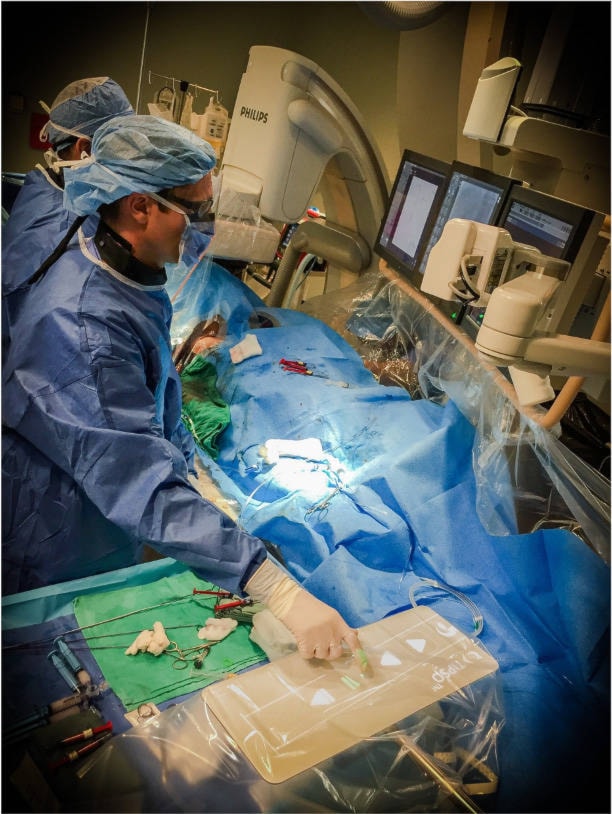Surrey Memorial Hospital is now home to two new ablation machines that can burn and freeze cancerous tumours, without the need for surgery.
The Surrey Hospitals Foundation has invested in two technologies to kickstart a “new minimally invasive Interventional Oncology service” at Surrey Memorial Hospital, according to a release from the foundation.
It’s part of the hospital’s “Interventional Radiology expansion, a first for Surrey and surrounding communities.”
With the help of a $100,000-donation from McQuarrie LLP, the hospital foundation was able to purchase a microwave ablation machine and a cryoablation machine for the interventional radiology team.
Dr. Behrang Homayoon, the lead for the hospital’s interventional radiology team, said the hospital already had one of the ablation machines and had “done a few cases” already.
Homayoon said ablation machines, or ablation, is a “minimally invasive technique where they basically make very small incisions in the skin and insert these small needles into various tumours in the body and we can freeze them and we can burn them.”
He said it essentially replaces more “traditional surgery that requires big cuts and significant perioperative care.”
Homayoon said the interventional radiology has specialists that use “all kinds of medical imaging equipment in the hospital like CT scans and MRIs and X-rays, to do minimally invasive procedures. Our specialty … it’s sometimes called ‘surgery without a scalpel,’ but it’s essentially not surgery because you have no stitches, no scars at the end.
“We make tiny little holes in the skin and basically use the body’s natural pathways like arteries, veins and solid organs to get access to the target that we’re trying to get to and then we treat things from the inside out as opposed to outside in.”
And interventional oncology is a segment of interventional radiology, Homayoon said.
“We’re basically delivering the therapeutics, the drugs that are needed to treat the tumour from the inside,” Homayoon explained. “The advantage of that is you’re treating the tumour and not getting the toxicity that you would otherwise get with systemic chemotherapy elsewhere in the body.”
While the technology isn’t new, Homayoon said, there hasn’t “historically been widespread adoption outside of some major centres.
“The need for these procedures, and use of this equipment, has had significant increase over time as there’s more supporting evidence suggesting that there’s significant benefits to this type of minimally invasive therapy, but really, access has been limited to big centres.”
He noted it’s important for all patients, and cancer patients, to be “treated closer to home, closer to their physicians who are looking after them in the community.”
In addition, Homayoon said because the operating period is “typically short,” the recovery period is “much faster.”
“(It’s) increasingly important in the COVID era because you don’t want to keep patients in hospital if you don’t have to,” he explained. “It significantly reduces costs to the whole system because you’re doing these procedures in the medical imaging department. You’re not taking an operating room to be able to do this.”
READ: GOWN UP to raise $10M for Surrey Memorial Hospital upgrades, Oct. 15, 2019
READ: Surrey’s thoracic surgeons on cutting edge, Dec. 4, 2017
lauren.collins@surreynowleader.com
Like us on Facebook Follow us on Instagram and follow Lauren on Twitter
